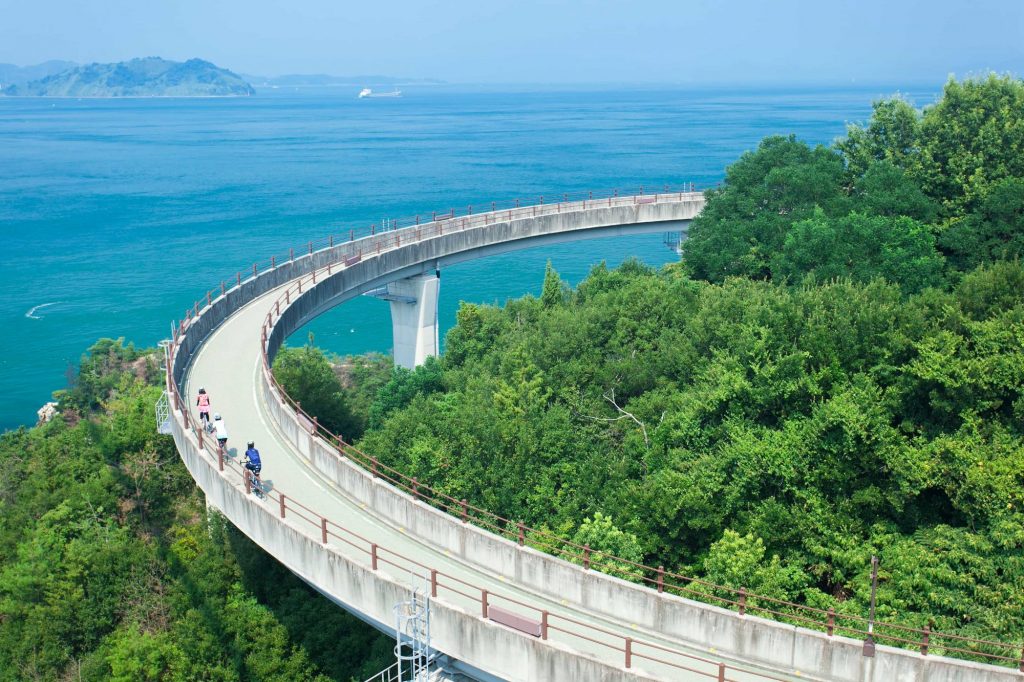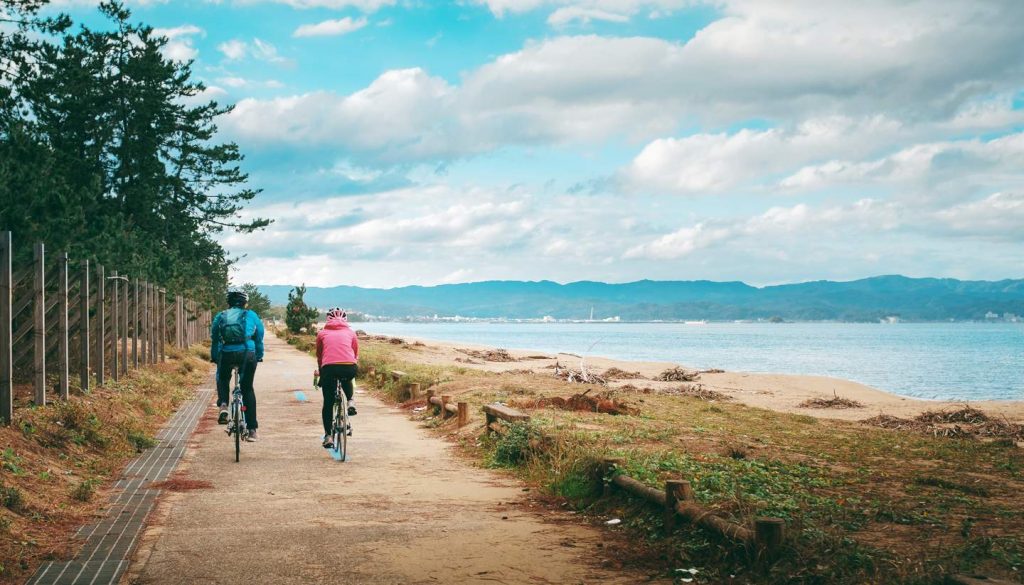Discover Italy’s Alpine Jewel: Aosta Valley
21.08.2024Northern Italy’s Aosta Valley, nestled between France and Switzerland, is famous for its winter skiing, but it’s a fabulous place...
Japan is home to many superb cycling routes. Here are some of our favourites.
The Shimanami Kaido is a 60 km long toll road that connects Japan’s main island of Honshu to the island of Shikoku, passing over six small islands in the Seto Inland Sea. The journey can be done in either direction, but we recommend starting in Onomichi, Hiroshima, on the main island of Honshu, with a night in Japan’s cycling hotel, Hotel Cycle, with bicycle racks in each room, tools and equipment on site, they will even send and receive bikes posted to them for guests from all around the world. The journey from one side to the other can be done in one day, but for a true Japanese experience stop off at one or more of the islands along the way for a relaxing night in a traditional Japanese inn, or ‘ryokan’. Ryokan are a cultural experience of themselves, with tatami mat floors, paper ‘shoji’ partitions and traditional, local produce used to cook dinner and breakfast.

For those looking to get out into the Great Outdoors, cycling the Tanesashi Coastline is a great way to experience northern Japan. Passing along coastal roads, through pine forests and little fishing villages, you will have the opportunity to stop off at secluded beauty spots along the way. Call into a local fish restaurant to refuel or enjoy one of the many shrines and temples as you make your way down the coastline of Hachinohe Prefecture. Bikes are available to rent from town for around £10 per day, making it an affordable option.
Kyushu is a region that is rich in nature, dotted with characteristic cycling roads in various locations. There are numerous courses that offer rental bicycles which have been steadily gaining popularity
as a form of casual leisure. Maple Yaba Cycling Road in Nakatsu City, Oita Prefecture is a 35km cycling road that utilises the former Yaba-kei Gorge Railroad which connected Nakatsu to Morizane Onsen for 63 years, from 1913 to 1975. This cycling road passes through the Yaba-kei Gorge which has green leaves in spring and fall foliage in autumn. Enjoy viewing the remains of the railroad tracks, rural landscapes, groves, clear streams and other gorgeous scenery along the way.
Hida Furukawa, a small town 40km away from Takayama, is located in the Japanese Alps. The town rests at the foot of the mountains, and the edge of a beautiful river, and has many attractive scenery, beautiful rice fields, and old town streets. Discover the Japanese Countryside, Satoyama, which in Japanese refers to the rural landscape in Japan, a landscape often composed of mountains, small villages and rice fields. ‘Sato’ means inhabited place and ‘Yama’ means mountain. Exploring the area by bike is the perfect way to discover and enjoy the region and its culture. Hida Satoyama Cycling Tours are organised in small groups (maximum 8 people) with an anglophone guide, bicycle rentals, helmets and insurance included. Several tours are offered ranging from 30 minutes to 3 hours.

Toyama Prefecture is a unique place with both coastal and mountainous scenery. The town of Kamiichi (above) lies at the base of the Tateyama mountain range and offers scenic views of the mountains in the distance and rice fields in the countryside. Visitors can explore the area cycling along a 20 kilometer cycle route which starts and ends at Kamiichi Station. This route leads to two temples via picturesque countryside roads. Along the way cyclists will encounter the Joyama Spring Water, a natural spring that is fed by snowmelt from the mountains, the Oiwasan Nissekiji Temple which was established in 725, Sengankei Valley, a hidden valley leading to Nissekiji Temple and Ganmokuzan Ryusenji Temple which was established in 1370. There is a 300-meter-long approach to the temple which is lined with tall toga (southern Japanese hemlock) trees some as old as 400 years.
Enjoyed this article? click here to get more from us
Northern Italy’s Aosta Valley, nestled between France and Switzerland, is famous for its winter skiing, but it’s a fabulous place...
The Nexus Knit from Xero Shoes combines a sleek design with barefoot comfort, making it an excellent choice for both...
Priesteregg, a premium eco resort in the Austrian mountains, has opened 3 stunning Lake Chalets. Known as ‘Seehütten’, the Lake...
Escape the crowds this summer and venture into the mountains to reconnect with nature and unleash your inner explorer. Discover...